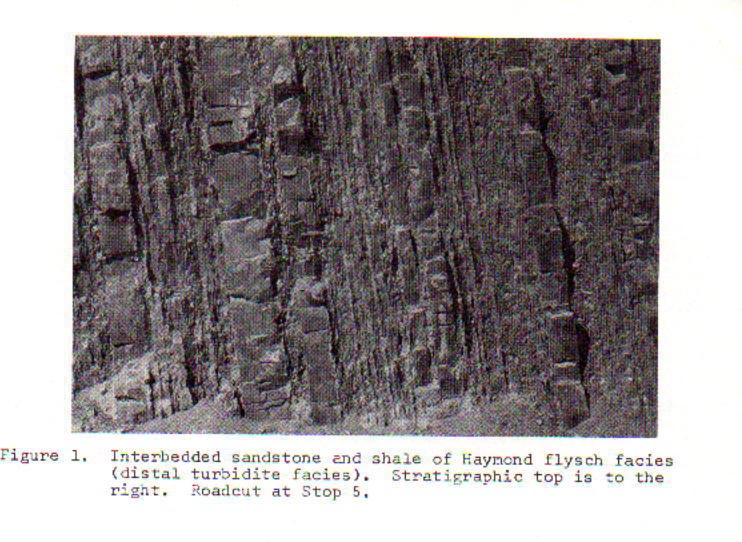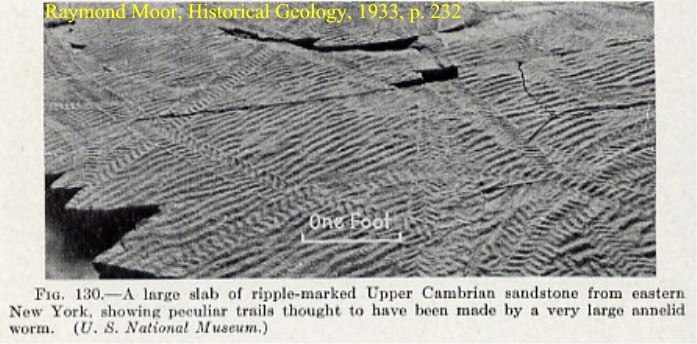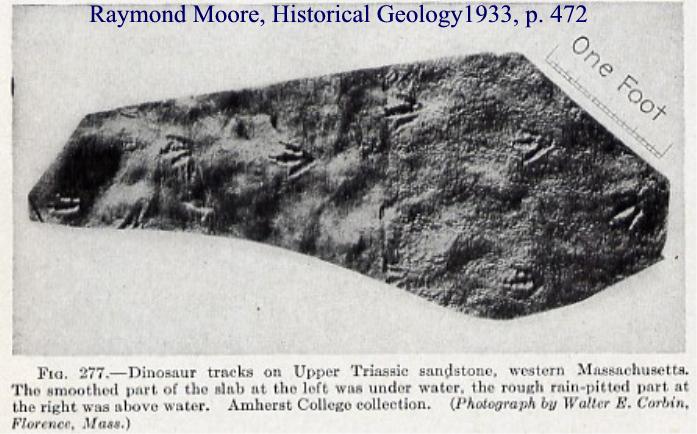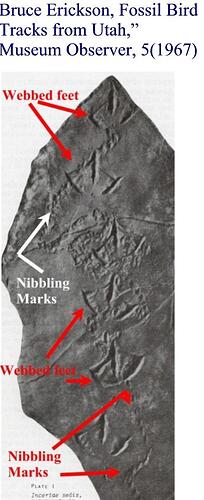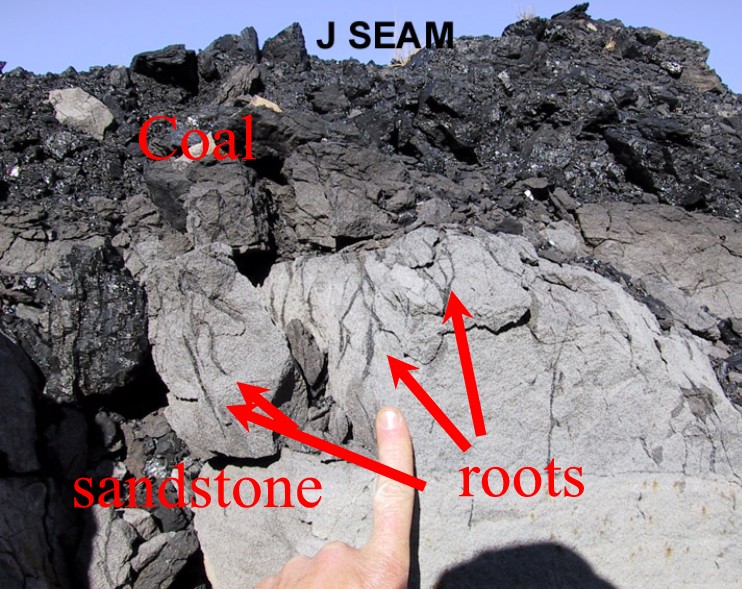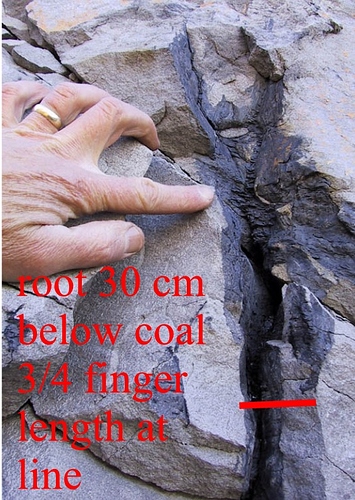I’m not sure why you think these seams of coal and deposits of oil are pristine and uncontaminated. In any case, you shouldn’t have brought up the subject. I have to direct you to our deceased friend Glenn Morton, @gbob, on the subject.
Some more from that thread:
The geologic data simply doesn’t support a young earth. Throughout out the geologic column, are burrows. There is one formation which which concerned me greatly, the Haymond formation of west Texas. It consists of about 15000 layers of sand and shale
“Two thirds of the Haymond is composed of a repititious alternation of fine- and very fine-grained olive brown sandstone and black shale in beds from a millimeter to 5 cm thick. The formation is estimated to have more than 15,000 sandstone beds greater than 5 mm thick.” p. 87.
"Tool-mark casts (chiefly groove casts), flute casts and flute-lineation casts are common current-formed sole marks. Trace fossils in the form of sand-filled burrows are present on every sandstone sole, but nearly absent within sandstone beds. ~ Earle F. McBride,“Stratigraphy and Sedimentology of the Haymond Formation,” in Earle F. McBride, Stratigraphy, Sedimentary Structures and Origin of Flysch and Pre-Flysch Rocks, Marathon Basin, Texas (Dallas: Dallas Geological Society, 1969), p. 87-88
Give each layer 1 day for recolonization of burrowers the deposit would require 41 years. Haymond formation is about 1300 m and the entire geologic column is about 5000 m thick. If it was deposited by Noah flood then the math would be like this: 1300/5000*326=95 days this means 157 couplets / day. with burrows. Each day 157 times, one must have shale laid down, worms burrow into the shale and have the sand come in and fill in the burrows with sand, and the worms are never seen escaping the sand-catastrophe, so the next layer of shale must be laid down, worms burrow into it and sand fill those burrows, over and over for 95 days. There are NO shale filled burrows into the sand.
This seems impossible to do given the turbulence of the global flood. Below is what the formation looks like and notice after it solidified (diagenesis takes more than a year) it was uplifted and turned on its end.
Adam, you really need to grapple with the facts and stop looking for loopholes. Glenn’s next post in that thread was a master class. I’ll just drop it here “as-is” without block quotes:
From the Cambrian, the lowest level of generally fossiliferous rock (yes I know there are Precambrian fossils, but young earthers generally say the fossiliferous sediments were deposited by the Flood.
Let’s consider one thing before we go further, the thickness of the fossiliferous rocks. I did a paper with another geophysicist and we proved from gravity and seismic that 200 miles south of New Orleans there were 50,000 feet of sediment. She did other work and showed under New Orleans, where the Missisippi River has been dumping sediment for more than 200 million years, there is 75,000 feet of sedimentary rock. But even a modest 36,500 ft thickness, which is not uncommon, requires 100 feet per day of average deposition during the flood. As you look at the pictures, ask yourself why there at these rates of deposition why all the fossils are not found at the bottom of the flood? Ask yourself how they had time to make theses tracks. From below are oldest to youngest, (lowest to highest in geologic column.
From the Cambrian, worm tracks, and ripples. this is shallow water.
From the Pennsylvanian,
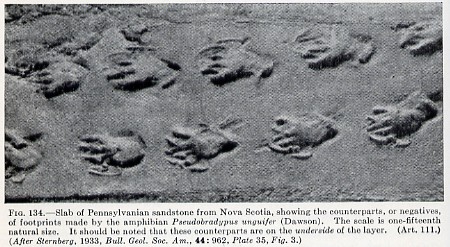
Triassic. A dinosaur walked into a still body of water. How do I know it is still water? Rapidly running water would wash his prints away immediately. this isn’t the flood. There are rain drops on the shore. Remember, this layer lies above several thousand feet of supposedly flood deposited sediment, so this isn’t the start of the flood.
Mesozoic age. A horseshoe crab had time to peacefully die as he walked in a spiral, slowly dying. this was not a rapid death by the flood.
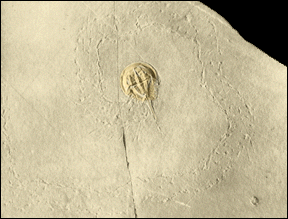
From the Paleocene, Ducks nibbled their dinner as if nothing special were happening.
And all the while these animals are living their life as if no flood is going on, Plants are growing in sediments which are in the middle of the flood deposited fossil sediments
Contrary to claims that there are no roots under coal, I will show you two cases, one from Canada and one from the US. both show the roots of plants which formed coal. The plant matter wasn’t washed in as YECs claim. The first is from the Cretaceous of the US, the second two are from the Cretaceous in Canada. Both show plants acting like there was no flood.
Edited to add, It took me a while to find the source of the picture below. I got a pic of this from a friend I worked with. Here is what I wrote about it before. It is from the Cretaceous not the Pennsylvanian, so I edited that to fix it as well, Often the claim is made that the entire geologic column was deposited in a huge catastrophe which lasted only 1 year. There is much evidence that the geologic column took a long time to be deposited. A core taken from the Murfin Drilling Co. Colorado State No. 1-16 well at the end of 1983 showed about 250 successive layers of roots in a 3-foot length of core. Below is a small part of the core which shows the roots and the layers that they truncate into. Each layer represents one year of growth. This core represents about 10 years worth of growth. The data from this core is inconsistent with the concept that the geologic column was rapidly deposited. I must emphasize that this coal was found in the middle of the geologic column there in Colorado below several thousand feed of sediment. My friend said he nicked this piece from the core cause he found it so interesting and they were looking for oil, not coal. lol
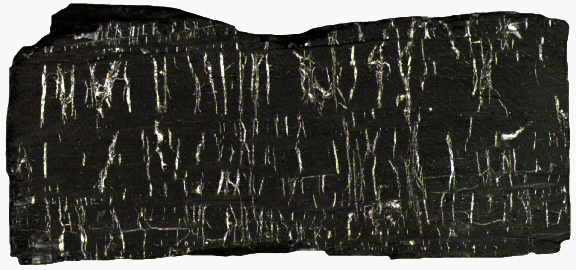
I will show that worms, clionid sponges etc are doing their thing, burrowing into rocks and sediments later.
